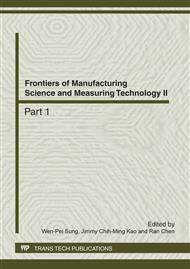p.262
p.266
p.270
p.276
p.280
p.284
p.289
p.293
p.297
A Repeated Loading Triaxial Test Study on Resilient Modulus of Graded Crushed Stone
Abstract:
To investigate the effect of confining stress, deviation stress, moisture content and gradation type on resilient modulus of graded crushed stones, three types of graded crushed stone with three moisture content levels(optimum moisture content and ±2% of the optimum moisture content, respectively ) were used, and repeated loading triaxial (RLT) tests with twenty five stress levels were carried out. The RLT test results demonstrate that resilient modulus of graded crushed stone remarkably increases with decreasing moisture content and/or increasing confining stress; resilient modulus of graded crushed stone slowly increases, or minor decreases at the beginning and then slowly increases with increasing deviation stress at low stress state. Results also indicate that gradation type has a certain impact on resilient modulus of graded crushed stone.
Info:
Periodical:
Pages:
280-283
Citation:
Online since:
April 2012
Authors:
Price:
Сopyright:
© 2012 Trans Tech Publications Ltd. All Rights Reserved
Share:
Citation:


